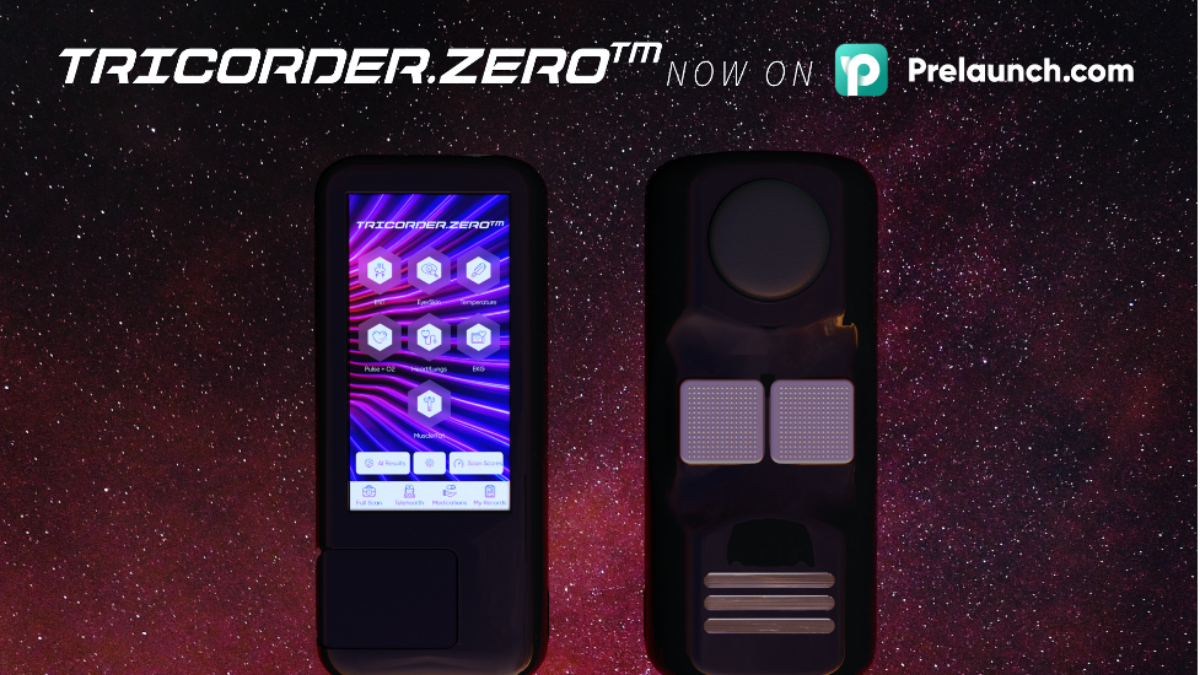
Like so many others, Marcus Soori was forced to seek medical care via telehealth during the global COVID-19 pandemic. He didn’t find it to be very effective.
“The care that telehealth visits provided to me and my family and friends during Covid was very limited,” Soori recalls. “It was basically just a ‘FaceTime’ call during which doctors collected subjective statements about the patients’ experiences. Because doctors were not able to combine what they heard with any objective data, they usually didn’t have what they needed to provide comprehensive care during the telehealth call. So, they would schedule follow-up in-office visits to gather objective sensor data to match the subjective statements, enabling them to properly and fully order tests, prescribe drugs, and/or refer to specialists, as needed. This, of course, caused inefficiency — rather than efficiency — leading to billions of dollars being wasted nationally.”
When the pandemic came to an end, Soori shelved his frustrations with telehealth as he started to get active again. He made a commitment to himself to lose the inches that stress eating had added to his waistline during Covid.
“I resolved to become fitter and track my progress,” Soori shares. “But I didn’t want to eventually become a cyborg toting around a dozen wearables: one for fitness tracking, one for sleep tracking, one for posture tracking — the list goes on and on. And each of them is limited in the sensors it accommodates.”
As Soori considered his dilemma, he started to envision a single device with many sensors that could be used for both health and fitness tracking as needed. Frustrated by all the subscription-based options he found available, he decided the right device would be subscription-optional — one that would allow users to track data in an ongoing way, while only sharing that data with a professional once or via subscription, as desired.
As his vision took shape, Soori knew that the optimal health and fitness tracking device could do much more than help him get fit again. A device that collected objective data could also fix the problems he experienced with telehealth during the pandemic by providing better care during telehealth visits, and reducing in-office follow-ups to save time and money. But when Soori couldn’t find that device on the market, he decided to create it himself.
The result of his efforts is Tricorder.Zero™: a health and fitness tracker with seven sensors that is now in the pre-launch phase. Unlike anything else on the market, it empowers users to give themselves and their healthcare providers all of the data necessary to pursue optimal health.
Table of Contents
Reimagining the world of health and fitness trackers
“The device I’ve designed over the past two years brings together the most used technologies for fitness tracking and at-home and in-office health diagnostics,” Soori explains. “It is powerful and simple to use, giving you everything you need in a health and fitness tracking device.”
Introducing Tricorder.Zero™, the ultimate portable health and fitness tracker. This wireless, pocket-sized device revolutionizes holistic data tracking, offering unparalleled functionality. With Tricorder.Zero™, you can effortlessly monitor medication, receive AI-enabled health alerts, securely store your health and fitness data, and even share real-time information with healthcare professionals or fitness trainers. Experience a new level of convenience and precision with Tricorder.Zero™.
The seven sensors included in the Tricorder.Zero™ design are a touchless infrared thermometer, a pulse oximeter, a stethoscope, an EKG, a body fat/muscle tone sensor, an otoscope, and a high-magnification camera for viewing and capturing close-ups of the skin and outer eye. All the information gathered through the tracker’s sensors is displayed on the Tricorder.Zero™’s touchscreen, or on a cell phone via a connected app.
Optimizing fitness programs and telehealth services
“Tricorder.Zero™ empowers you to take control of your holistic health, as well as makes it possible to experience the full potential of telehealth and tele-fitness,” Soori says, “and its applications are virtually limitless. A pregnant woman can use it to listen to her baby’s heartbeat starting at 18-20 weeks. An adult child can use it to keep track remotely of an aging parent’s health. A student can use it to facilitate a telehealth appointment, instead of enduring the traffic and waiting involved with an in-office visit.”
Soori sees Tricorder.Zero™ as a device with the potential to increase efficiency in the healthcare space and make needed care more accessible.
“As a medical student, I learned about the inequities in healthcare, particularly with underserved populations,” Soori says. “Nearly 30 million people in the US do not have health insurance, and 40 percent can’t afford to see a doctor, even if they have insurance! I also witnessed all the waste that occurs with duplicate testing and unnecessary care due to a lack of availability of alternative and more efficient care methods. I believe Tricorder.Zero™ can help to drive a greater level of efficiency and accessibility in the healthcare space.”
Early supporters of Tricorder.Zero™ have the opportunity to reserve theirs for 20 percent less than the future retail price. The discount will be applied when the crowdfunding campaign launches. Crowdfunding campaign backers will also have the privilege of serving as exclusive private beta testers who will contribute to the device’s future final design and features.